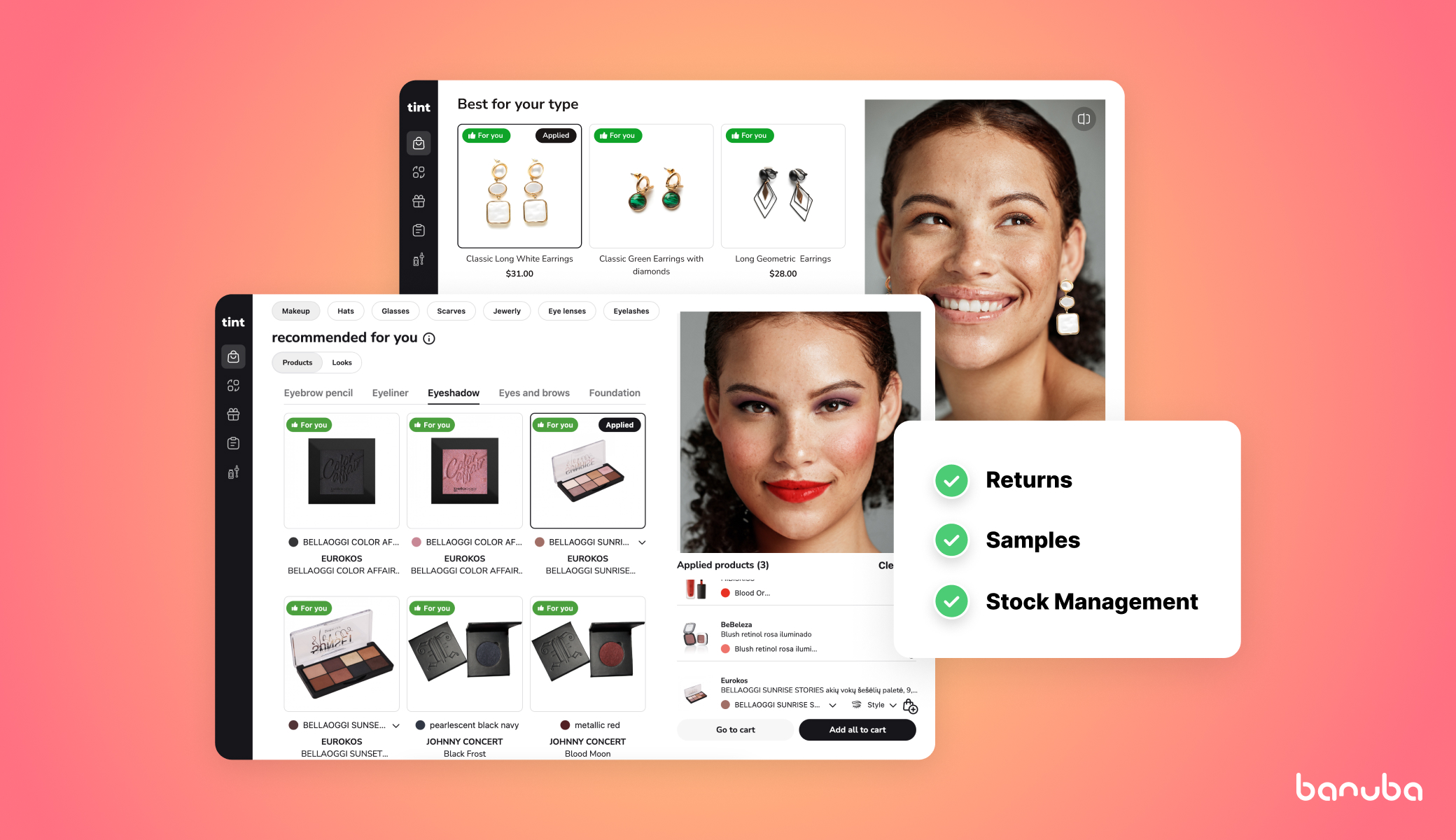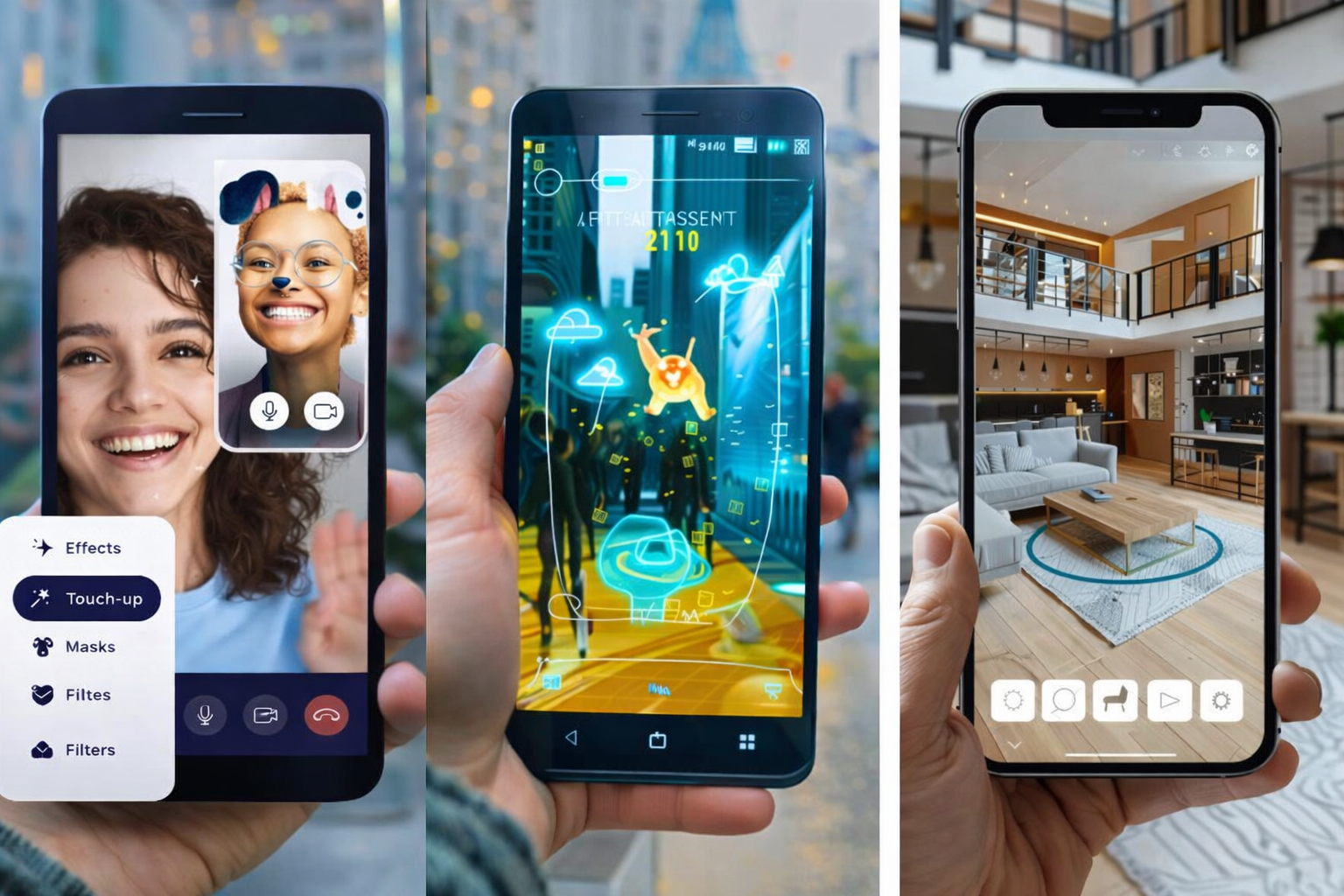Sustainability In eCommerce: How Augmented Reality Helps Businesses In Going Green
Sustainability has been widely spoken about in recent years. Even more, adopting sustainable practices and so-called “going green” are the new reality for businesses that want to ensure a persistent flow of clients and a smooth operation in the long run. The global tendencies are shifting towards a more conscious approach, and consumer demands follow suit: according to research, 62% of consumers are willing to pay more for sustainable brands. Learn how augmented reality technologies and Banuba’s solutions in particular drive businesses to sustainability and elevate their performance in this article.

[navigation]
TL;DR
- By embracing augmented reality tech and virtual try-on experiences, brands can minimize their environmental footprint while enhancing operational efficiency.
- Packaging: Prioritize using biodegradable or recycled materials to reduce your brand’s carbon footprint and minimize excessive packaging.
- AR for Reduced Returns: Implement virtual try-on solutions to enhance buyer confidence and reduce return rates. Accurate visualization enables customers to make informed purchasing decisions, eliminating the need for extra returns.
- Digital Samples: Instead of physical product samples, go for digital alternatives that can streamline operations and minimize waste, as well as eliminate hygiene concerns while offering immersive, eco-friendly experiences for consumers.
- Phygital Approach: Combine physical and digital elements through smart augmented reality devices. This will help you enhance the retail experience while reducing the need for physical samples.
- Consumer Engagement: Virtual try-on tools like TINT enable immersive and interactive experiences, increasing consumer engagement and trust.
Why Is Everyone Talking About Sustainability In Business?
Sustainability has been steadily gaining momentum across industries in recent years. Humans are becoming more aware of their impact on the environment and strive to minimize the damage done to the planet. As a result, businesses are increasingly recognizing the importance of integrating eco-friendly practices into their operations. From small startups to multinational corporations, the conversation around sustainability in business is no longer the one to ignore.
But why exactly is sustainability such a concern in the first place? The answer lies in the long-term benefits not only for nature, but also for companies and the market in general. By prioritizing this metric, companies contribute to preserving the environment while also reaping substantial rewards for their own operations. Being sustainable in the market allows businesses to qualify for so-called “green taxes” or even grants from the government or specialized foundations. This approach isn't just about being eco-friendly; it's also about ensuring longevity and efficiency in business practices.
Because the mindset of consumers has shifted, brands are being held accountable for their sustainability claims and actions to minimize their carbon footprint. Innovations like virtual try-on technology are helping reduce waste by allowing consumers to make more informed purchasing decisions, thereby supporting sustainable practices. However, consumers are quick to identify any brands that are greenwashing (taking performative actions without actually doing anything eco-friendly), so if you want to build a reputation of a sustainable business, it is vital to act on it.
Concerns And Challenges On The Way To Sustainability
Running a sustainable business requires a substantial amount of effort and implies turning to environmentally friendly tools and practices. When going green, retail and beauty business owners encounter a number of challenges on each step of their workflow. Let’s take a closer look at some of them to see how they can be resolved.
Product Packaging And Delivery
About 80% of shoppers believe online shipments contain unneeded amounts of packaging. It is quite common to see a small product like a pair of sunglasses delivered in a massive box with loads of unnecessary wrapping and stuffing, often made of plastic. In fact, 75% of consumers want brands to reduce packaging: they prefer it when brands opt for simple, reusable or recyclable options.
While in some cases the reasons for such excessive packaging may be justifiable (to prevent damage during shipment), some eCommerce stores pack their products in multiple layers for aesthetic or marketing purposes. In general, ecommerce generates about 4.8 times more packaging waste than offline shopping. So packaging is a vital aspect to take care of when claiming the ‘sustainable’ status.
One solution to this challenge is to opt for using biodegradable or recycled materials that help you minimize your carbon footprint. Besides that, retailers can focus on minimizing the need to pack and repack products, reusing the factory package. Russia-based Melon Fashion Group saves the plastic bags clothes come to the store in and use them to pack purchases in brick-and-mortar stores, as well as online orders.
Product Returns
Another issue lies in returns. The challenge of excessive packaging is closely connected with the possibility to return almost any fashion or beauty product, especially those bought online. The numbers for 2024 reveal a daunting reality – a colossal $817 billion in returns, a staggering 16% of total retail sales worldwide. The US National Retail Federation estimated a staggering $101 billion as the cost of returns. And the environmental impact is huge, from the doubling of delivery mileage to the waste caused by items that are uneconomical to repackage and resell, resulting in 4.3 million kg of waste in 2022 in the US alone.
This is specifically alarming in cosmetics and skincare e-commerce. For example, the return policy in the US allows customers to return products that had already been opened and used, like a small tube of mascara or lipstick. Once returned, they make for a certain amount of waste on their own. Not to mention the damage done by extra shipments: every delivery trip adds to the brand’s carbon footprint.
In order to resolve this challenge, you need to increase buyer confidence: when your customers are able to visualize exactly how the product will look on them before purchasing, they will be less likely to return it. This is where augmented reality try-on comes into play. Accurate visualization can help your customers understand whether they need the product or not and eliminate the need for excessive shipments. Banuba’s TINT, for one, offers top-quality face and head segmentation, which allow for precise product placement and size adjustment. The use of virtual try-on tools brings along a positive change to retailers like a 60% decrease in return rates. With little to no additional devices or computing power required, TINT is a potent tool that can boost your brand’s sustainability.
Samples And Stocks
Sample production is a similar challenge. In brick-and-mortar beauty stores, samples are typically smaller, less visually appealing tubes of the same product, one or even more per shade or variety. Samples also come in the form of testers: tiny packages with one or two doses of product distributed to attract potential customers. And samples of headwear, glasses, and other accessories located in brick-and-mortar stores are no different as they impose the same challenges: they take up storage space and require packaging and delivery just like all other product units.

Enabling 3D product visualization and virtual try-on is a sustainable alternative to samples. Firstly, a quality AR try-on technology allows customers to envision how beauty products interact with their skin type and tone: Secondly, digital samples reduce hygiene and sanitary concerns that surround physical samples: customers no longer need to worry about the cleanliness of product samples or use tons of paper tissues to remove the product once they apply it to their skin (and paper tissues is another element to unnecessary waste generated by physical product samples).
Another feature is that virtual try-on blends seamlessly into a brick-and-mortar environment, creating a so-called phygital (physical + digital) approach. Instead of putting up and restocking product samples, interactive devices can be introduced to stores. Smart augmented reality mirrors are easy enough to install and economically viable, considering that they last significantly longer than any traditional cosmetics sample. Smart mirrors can store an unlimited amount of products and shades, which makes them a great help when managing stocks: with their help, customers can try on any product or shade regardless whether it is in or out of stock in a specific location.
How Augmented Reality Empowers Sustainable Business Practices
Augmented reality is no novelty in today’s market. This technology is revolutionizing the way beauty and makeup brands operate, boosting their sustainability with simple but effective solutions to all challenges. Let’s take a closer look at what AR offers to businesses in order to help them embrace sustainable practices and elevate their performance in the market.
- Environmental impact. By enabling virtual try-on experiences, AR eliminates the need for physical product samples, reducing waste generated from packaging, storage, and distribution. Instead of producing and restocking numerous physical samples, brands can leverage AR technology to offer digital samples that are both eco-friendly and hygienic.
- Enhancing operational efficiency. By implementing AR try-on solutions, brands can optimize inventory management and minimize stock-related waste. Smart augmented reality mirrors, for example, provide customers with access to an extensive range of products and shades, regardless of their availability in-store.
- Driving consumer engagement. Beyond operational benefits, virtual try-on offers immersive and interactive experiences both in brick-and-mortar stores and during online shopping. Virtual try-on tools enable customers to experiment with different looks in real-time, fostering a deeper connection with the brand and increasing buyer confidence, which results in an increase in sales without much impact on the planet. Besides that, customers tend to put more trust into environmentally friendly companies, buying from them more eagerly.
Conclusion
Augmented reality emerges as a transformative force in beauty and makeup retail, offering a pathway to sustainability and innovation. As sustainability continues to shape consumer preferences and market dynamics, AR presents a great opportunity for brands to not only meet but exceed expectations, paving the way for a greener, more responsible future in eCommerce.
By harnessing AR technology, businesses can minimize their environmental footprint, optimize operational efficiency, and enhance consumer engagement. Virtual try-on can help beauty and makeup brands not only drive business success but also contribute to a more sustainable and environmentally conscious global economy.





